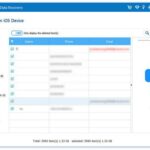Headaches are a common ailment, with many experiencing their throbbing pain at some point. Whether it’s a mild tension headache or a debilitating migraine, finding effective relief is crucial. This guide provides comprehensive strategies on how to get rid of a headache, exploring immediate remedies and long-term prevention methods.
Understanding Your Headache
Before diving into solutions, it’s helpful to understand the type of headache you’re experiencing. Headaches are broadly categorized into primary and secondary headaches. Primary headaches, like tension headaches, migraines, and cluster headaches, are not caused by an underlying condition. Secondary headaches are symptoms of other medical issues, such as sinus infections or dehydration.
- Tension Headaches: These are the most common type, often described as a tight band or pressure around the head. They are usually mild to moderate in pain and can be triggered by stress, muscle tension, or poor posture.
- Migraines: Migraines are characterized by intense throbbing pain, often on one side of the head. They can be accompanied by nausea, vomiting, and sensitivity to light and sound. Migraines can be triggered by various factors, including hormonal changes, certain foods and drinks, and stress.
- Sinus Headaches: These headaches are associated with sinus infections and cause pain in the forehead, cheekbones, and bridge of the nose. They are often accompanied by nasal congestion and pressure.
- Cluster Headaches: These are severe headaches that occur in clusters, with intense pain usually around one eye. They are less common than tension headaches or migraines.
Understanding your headache type can guide you to the most effective treatment and prevention strategies.
Immediate Headache Relief
When a headache strikes, you’ll want fast relief. Here are several methods to alleviate headache pain quickly:
Over-the-Counter (OTC) Pain Relievers
For most common headaches like tension headaches and mild migraines, OTC pain relievers can be very effective.
- Acetaminophen (Tylenol): Acetaminophen is a common pain reliever that can help reduce headache pain. It’s often recommended for tension headaches and is generally safe for most people when taken as directed.
- Nonsteroidal Anti-Inflammatory Drugs (NSAIDs): NSAIDs like ibuprofen (Advil, Motrin) and naproxen (Aleve) reduce inflammation and pain. They are effective for tension headaches and migraines. However, it’s important to use NSAIDs as directed, as overuse can lead to medication-overuse headaches.
Alt text: A woman experiencing a headache considers taking over-the-counter medication for relief, highlighting the accessibility of OTC treatments.
Hydration
Dehydration is a common headache trigger. When your body lacks fluids, it can lead to headaches.
- Drink Water: Drinking plenty of water can often relieve a dehydration headache within 30 minutes to three hours. Aim for regular water intake throughout the day, especially if you’re physically active or in a hot environment.
- Electrolyte Drinks: In cases of severe dehydration, electrolyte drinks can help replenish lost salts and minerals, potentially easing headache symptoms.
Rest and Relaxation
Stress and lack of sleep are major headache triggers. Taking time to rest and relax can significantly reduce headache pain.
- Quiet, Dark Room: Lie down in a quiet, dark room to minimize sensory stimulation that can worsen headaches, especially migraines.
- Relaxation Techniques: Practices like deep breathing, meditation, and progressive muscle relaxation can help ease tension headaches. Mindfulness techniques can also reduce stress and headache severity.
Alt text: A person engages in deep breathing exercises to alleviate headache pain naturally, emphasizing relaxation as a headache remedy.
Cold or Heat Compress
Applying temperature therapy can provide localized pain relief.
- Cold Compress: Applying a cold pack or ice wrapped in a cloth to your forehead, temples, or neck can help numb pain and reduce inflammation. Cold therapy is often beneficial for migraines.
- Heat Compress: A warm compress or heating pad applied to the neck or shoulders can relax tense muscles, providing relief for tension headaches. A warm shower or bath can also have a similar effect.
Acupressure
Acupressure involves applying pressure to specific points on the body to relieve pain.
- LI-4 Point (Hegu): Located in the webbing between your thumb and index finger, applying firm pressure to this point for a few minutes can help relieve headaches.
- LV3 Point (Taichong): Situated on the top of your foot in the valley between the big toe and second toe, stimulating this point may also reduce headache pain.
Natural and Home Remedies for Headaches
Beyond immediate relief, several natural remedies can help manage and reduce headache frequency.
Ginger
Ginger has anti-inflammatory properties and has been shown to be effective in reducing migraine pain.
- Ginger Tea: Drinking ginger tea can help alleviate headache symptoms. You can make ginger tea by steeping fresh ginger slices in hot water.
- Ginger Supplements: Ginger supplements are also available and may provide similar benefits. Studies have compared ginger to sumatriptan, a common migraine medication, and found it to be similarly effective for acute migraine treatment.
Essential Oils
Certain essential oils have properties that can help relieve headaches.
- Peppermint Oil: Applying diluted peppermint oil to the temples and forehead can provide a cooling sensation and help relax muscles, easing tension headaches.
- Lavender Oil: Lavender oil has calming and relaxing properties. Inhaling lavender essential oil or applying it topically (diluted in a carrier oil) can help reduce migraine severity.
Alt text: Aromatherapy using lavender and peppermint essential oils as a natural method to alleviate headache pain.
Magnesium and Riboflavin
Magnesium and riboflavin (vitamin B2) are essential nutrients that play a role in headache prevention.
- Magnesium Supplements: Magnesium deficiency has been linked to headaches, particularly migraines. Magnesium supplements may help reduce headache frequency and severity.
- Riboflavin Supplements: Riboflavin is another nutrient that has shown promise in migraine prevention. Regular intake of riboflavin may help reduce migraine attacks.
Butterbur and Feverfew
These herbal remedies have been traditionally used for headache relief.
- Butterbur: Butterbur extract has been studied for migraine prevention and may help reduce migraine frequency. However, it’s important to use PA-free butterbur products to avoid liver toxicity.
- Feverfew: Feverfew is another herb that has been used to prevent migraines. It may help reduce the frequency and severity of migraine attacks.
Preventing Headaches: Lifestyle and Habits
Preventing headaches is often more effective than just treating them when they occur. Adopting healthy lifestyle habits and identifying and avoiding triggers are key strategies.
Identify and Avoid Headache Triggers
Many factors can trigger headaches. Keeping a headache diary can help you identify your specific triggers. Common triggers include:
- Stress: Manage stress through relaxation techniques, exercise, and mindfulness.
- Diet: Certain foods and drinks, such as aged cheeses, processed meats, caffeine, and alcohol, can trigger headaches in some people.
- Sleep: Both lack of sleep and excessive sleep can trigger headaches. Maintain a regular sleep schedule.
- Caffeine: While caffeine withdrawal can cause headaches, excessive caffeine intake can also be a trigger.
- Alcohol: Alcohol, especially red wine, is a known migraine trigger for many.
- Weather Changes: Changes in barometric pressure can sometimes trigger headaches.
Headache Hygiene
“Headache hygiene” refers to establishing healthy daily habits to minimize headache risk.
- Regular Sleep Schedule: Go to bed and wake up at the same time each day, even on weekends, to regulate your body’s natural sleep-wake cycle.
- Stay Hydrated: Drink adequate water throughout the day.
- Eat Regular Meals: Avoid skipping meals, as hunger can trigger headaches.
- Manage Stress: Incorporate stress-reducing activities into your daily routine.
- Regular Exercise: Engage in regular physical activity, but avoid overexertion, which can sometimes trigger headaches.
Consider Medical Consultation
While most headaches can be managed with self-care and OTC remedies, it’s important to know when to seek medical attention. Consult a doctor if you experience:
- Sudden, severe headache (“thunderclap headache”)
- Headache with fever, stiff neck, confusion, seizures, double vision, weakness, numbness, or speaking difficulties
- Headache after a head injury
- Chronic headaches that are worsening or not responding to self-care
Conclusion
Getting rid of a headache involves a combination of immediate relief strategies and long-term prevention. By understanding your headache type, utilizing effective remedies like OTC pain relievers, hydration, and relaxation techniques, and adopting healthy lifestyle habits, you can significantly reduce headache frequency and severity. For persistent or severe headaches, seeking medical advice is essential. Take control of your headache management and improve your overall well-being.
Sources:
National Headache Foundation: “The Complete Headache Chart.”
National Health Service (UK): “10 Headache Triggers.”
International Headache Society: “The International Classification of Headache Disorders 3rd edition: External-Pressure Headache.”
American Headache Society: “Ten Things That You and Your Patients with Migraine Should Know.”
The Migraine Trust: “Treatment Options.”
Lawrence C. Newman, MD, President, American Headache Society and Director, Headache Institute, Mount Sinai Roosevelt Hospital, New York City.
American Migraine Foundation: “Headache Hygiene – What is it?” “Acute Therapy: Why Not Over-The-Counter or Other Nonspecific Options?” “Relaxation and Paced Breathing Exercise for Migraine.”
Mayo Clinic: “Migraine,” “Migraines: Simple steps to head off the pain,” “Medication overuse headaches,” “Tension headache,” “Sinus Headaches.”
National Center for Complementary and Integrative Health: “Headache: What You Need to Know,” “Butterbur,” “Feverfew.”
Cephalalgia: “Double-blind placebo-controlled randomized clinical trial of ginger (Zingiber officinale Rosc.) addition in migraine acute treatment.”
Phytotherapy Research: “Comparison between the efficacy of ginger and sumatriptan in the ablative treatment of the common migraine.”
FamilyDoctor.org: “Hydration: Why it is so important.”
HealthyChildren: “Choosing Over-the-Counter Medicines for Your Child.”
Beth Israel Deaconess Medical Center: “How to Avoid Migraine Triggers.”
National Institute of Neurological Disorders and Stroke: “Headache.”
SleepFoundation.org: “Morning Headaches: Why Do I Wake Up With A Headache?” “Can a Lack of Sleep Cause Headaches?”
Neurology: “Evidence-based guideline update: NSAIDs and other complementary treatments for episodic migraine prevention in adults: report of the Quality Standards Subcommittee of the American Academy of Neurology and the American Headache Society.”
National Institutes of Health Office of Dietary Supplements: “Magnesium,” “Riboflavin.”
Cleveland Clinic: “Headaches,” “Migraine Headaches,” “Dehydration Headache,” “Tame Your Tension Headaches Naturally,” “21 Tips for Mindfulness,” “Easing Your Tension Headaches: 7 Tips From a Chiropractor,” “Sinus Headaches.”
Icahn School of Medicine at Mount Sinai: “Coenzyme Q10,” “Lavender.” “Eucalyptus.”
Memorial Sloan Kettering Cancer Center: “Acupressure for Pain and Headaches.”
American Academy of Sleep Medicine: “Tension headaches, naps and insomnia.”
Harvard Health Publishing: “Have a headache? The top 7 triggers.”
The Egyptian Journal of Neurology, Psychiatry and Neurosurgery: “Melatonin as a treatment for migraine sufferers: a systematic review.”
European Neurology: “Lavender essential oil in the treatment of migraine headache: a placebo-controlled clinical trial.”
The Laryngoscope: “Therapy for Acute Nonpurulent Rhinosinusitis With Cineole: Results of a Double-Blind, Randomized, Placebo-Controlled Trial.”

